Steinhardt Museum of Natural History
The Steinhardt Museum of Natural History, Israel National Center for Biodiversity Studies at Tel Aviv University, is a natural history museum in Israel, including both education and a research center. It is the largest and most active center in Israel of documentation and science, focusing on biodiversity research and its varied applications including nature conservation, environmental protection, and agriculture.[1][2][3]
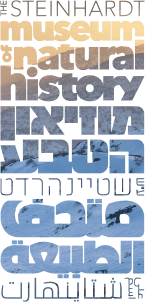 | |
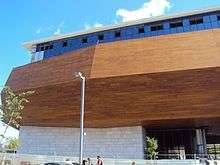 The museum under construction in 2016. | |
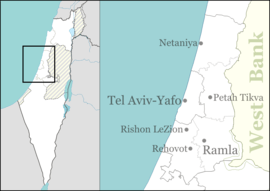 Location within Tel Aviv | |
| Established | 2018 |
|---|---|
| Location | Tel Aviv |
| Coordinates | 32.113701°N 34.807448°E |
| Type | Natural history museum |
| Collection size | 5.5 million items |
| Founder | Tel Aviv University |
| Executive director | Alon Sapan |
| Curator | Tamar Dayan |
| Architect | Kimmel Eshkolot Architects |
| Website | smnh |
The museum is set for the discovery, collections development and care, and scientific categorization of millions of specimens, documenting the flora and fauna in the area, as well as the history of humankind and its interactions with the environment. It provides access to its scientific treasures and accumulated knowledge to the public and the scientific and professional community.[2][3]
The Museum’s collections holding some 5.5 million items accumulated by many scientists from Tel Aviv University and other institutions, find their new home at the Steinhardt Museum of Natural History.[1][4][2][5]
The collections document the flora and fauna of Israel and the Middle East for thousands of years, as well as human development and the history of humankind. The museum building is located in the east of Tel Aviv University campus, across the Diaspora Museum gate, adjacent to the Botanic Gardens[3] and the I. Meier Segals Garden for Zoological Research. The construction of the museum building was made possible following the support of Michael Steinhardt,[1][4][5][3] former Chairman of the Board of Governors of Tel Aviv University, and his wife, Judy,[6] as well as donations from other foundations and individuals (Yad Hanadiv, Dan David Foundation, Arison Foundation, KKL-JNF, Millie Phillips, Colette Kerber, and Haim Filler, as well as government assistance provided by the Planning and Grants Committee of the Council of Higher Education, the Ministries of Environmental Protection; Agriculture and Rural Development; Tourism; Science & Technology.[3][7][8] The museum's collections operate under the auspices of the Israel Academy of Sciences and Humanities and with the support of the Planning and Grants Committee of the Council of Higher Education.[3] Designed by Kimmel Eshkolot Architects. The museum opened to the public July 2018.[9]
Planning and architecture
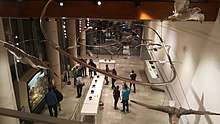
The 9620 sq m five story museum building was designed as a "Treasure Box" or "Noah's Ark" [10] Thousands of items from the collections, used primarily for research, presented to the public, as part of exhibitions at the museum. Exhibition spaces comprise over 1,700 square meters[4][3] in nine themed exhibitions: bird migration; Israel's diversity of ecosystems; bugs and beyond; life in dark; (animal) shape, structure and functions; human impacts on the environment; the web of life; the collections treasure. The Steinhardt Museum of Natural History is chaired by Prof. Tamar Dayan[2][3] (of the School of Zoology at Tel Aviv University). Alon Sapan is the Museum’s director.[4]
Collections and Research
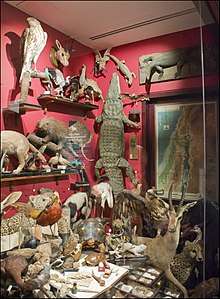
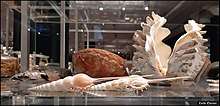
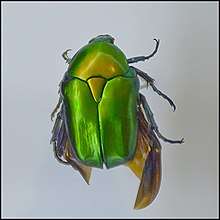
The museum's collections are used for basic and applied research, for teaching and training, and for exhibitions to open to the public.[3] The Zoological Museum (Department of Zoology, Faculty of Life Sciences), the National Herbarium of algae, fungi, and lichen (Department of Molecular Biology and Ecology of Plants, Faculty of Life Sciences), National Anthropological Collections (Department of Anatomy, Faculty of Medicine), and the collections and laboratories of biological archeology (Institute of Archeology, Faculty Humanities) have joined forces to establish the Steinhardt Museum of Natural History, Israel National Center for Biodiversity Studies.[11][12]
The Museum maintains millions of specimens that record the fauna and flora of the region over the past century, as well as the development and history of humankind. The collections are an extremely active National Research Infrastructure that is used by over 500 scientists,[2] graduate students, and professionals from Israel and the world every year.[3] The Israel Academy of Sciences and Humanities recognized the collections as national collections, a national museum of natural history in the making,[13] while the National Council for Research & Development recognizes them as a National Research Infrastructure.[13] The Ministry of Science & Technology recognizes the museum as a Knowledge center in agricultural and the environment.[14]
Permanent Exhibitions
- Birds Migration - on the ceiling of the entrance lobby there are taxidermies of flying birds passing over Israel during the migration season, including water birds, storks, pelicans and rollers.
- Israeli Natural Habitats - several flat dioramas of natural habitats in Israels and their common fauna, including desert, sand & dunes, forests, fresh waters and the Hermon mountain's alpine climate. It is presented in the entrance ramp to floor 1.
- Insects and their relatives - in the entrance floor and including terrariums with living arthropods as well as taxidermy specimens.
- Form, Structure, Function - an exhibition in floor 1 showing how the body of animals is adapted to their function. includes many skeletons and taxidermies of animals such as Velociraptor (replica), giant Aldabra tortoise, Negev gazelle, porcupine, elephant skull, mallard, flying fox and more.
- Humans' Impact on the Environment - an interactive exhibition showing mainly the negative impact of human on the environment (pollution, destruction of habitats, invasive species, over-fishing etc).
- Interaction Between Animals and Ecosystems - starting with a diorama of the ecosystem created by the Acacia tree, showing inter-relations and connections between different animals, plants and their ecosystems.
- Whale - a full size skeleton of a Common minke whale.
- The Collection Treasuries - a wide collection of taxidermied birds and mammals, skeletons and preserved specimen of fish and marine invertebrates. Behind a protective glass the historical collection of the 19th century zoologist Father Schimtz is presented, including the last wild Nile Crocodile hunted in Israel. This exhibition is presented in the 2nd floor.
- The Origin of Man - anthropology and skeletons of prehistoric men, showing their evolution from "Lucy" (replica) to modern Homo sapiens. Located in the 4th floor.
Israel Taxonomy Initiative
The Israel Taxonomy Initiative (ITI),[15] a project supported by the higher education system of Israel, government ministries and agencies, and various research institutions, functions within The Steinhardt Museum of Natural History. Its main activities aim to revive the field of taxonomy, to train of taxonomists, and to deepen the knowledge of the biodiversity of Israel. The ultimate goal of the initiative is to contribute to the study, conservation and sustainable use of ecosystems in Israel.[15]
Education
The museum integrates and absorbs the educational activities previously conducted within "Campus-Teva" at Tel Aviv University.[16][12][17]
References
- (October 20, 2016). The 8,000-sq.m. building will be the largest center in Israel for biodiversity research, education and conservation. Globes.
- Boissoneault, Lorraine (July 12, 2017). The Middle East Is a Treasure Trove of Natural Wonders. Now It Has a Museum to Show Them Off . Smithsonian (magazine)
- Jacobson, Michael (March 24, 2017). The Steinhardt Museum of Natural History in Tel Aviv. Ynet.
- Davis, Barry (October 23, 2016). Naturally Local. The Jerusalem Post.
- (August 22, 2016). Ark-shaped museum to show evolutionary crossroads in Israel. Reuters.
- The Steinhardt Museum of Natural History, Israel National Center for Biodiversity Studies. Tel Aviv University site
- Building, Museum site
- Steinhardt Museum inaugurated with flare and critters. Tel Aviv University site
- Museum site
- Museum of natural history. Kimmel site.
- The Steinhardt Museum of Natural History, Israel National Center for Biodiversity Studies. Tel Aviv University site
- About. Museum site.
- National Collections of Natural History, Museum site
- Infrastructural Knowledge Center. Museum site
- The Israel Taxonomy Initiative, Museum site
- Progrmas, Nature Campus
- Expansion, The Steinhardt Museum of Natural History, Tel Aviv University site